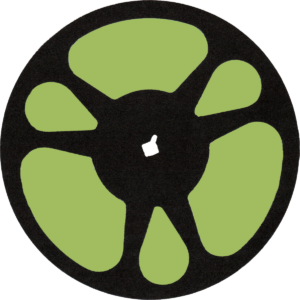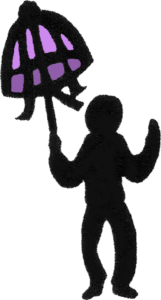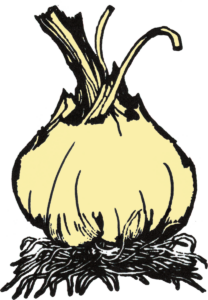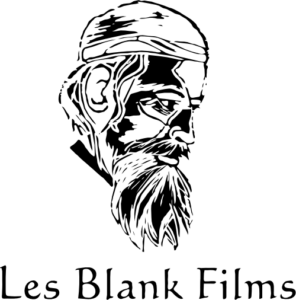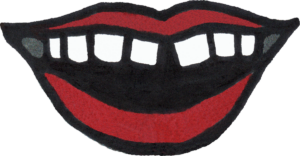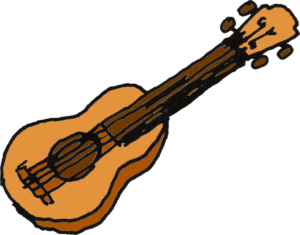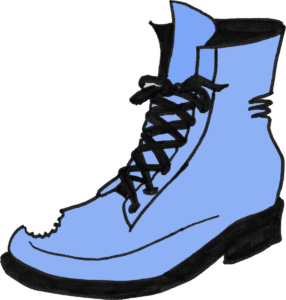Oxford American Magazine
Southern Movie Issue, Winter 2002
13 Essential Southern Documentaries
DANCING OUTLAW (1991) Directed by Jacob Young
Reviewed by John Jeremiah Sullivan
In 1991 the late Paul Metcalf’s “Mountaineers Are Always Free!” was published. The title is a translation of West Virginia’s state motto, “Montani Semper Liberi!” and the book, like much of Metcalf’s work, reflects a search ‘ more intelligent than thorough ‘ through centuries of literary and historical material. From this he emerges with names, quotations, facts, eyewitness anecdotes, and his own restrained observations, most having to do with the amazing violence and eccentricity that have been part of the place since it was (along with California) just another unexplored piece of Virginia’s western holdings. These gleanings are laid beside one another to form a sort of nonfiction novella, the main character of which is West Virginia itself. An example of Metcalf’s juxtapositions:
An early hunter on the Cheat River reported seeing a rattlesnake with the body of a small fawn between its jaws.
“West Virginia: the Switzerland of America.”
When the history of the arts in West Virginia comes to be written, it will be noted with regret that just as Paul Metcalf was sending his book to the printer, Jacob Young’s now-legendary short documentary, “Dancing Outlaw”, was making its first appearance on PBS. Had the film come out a few months sooner, it’s hard to believe Metcalf wouldn’t have found a way to work in Jesco White of Boone county, a man puzzlingly–but perfectly — described by guitar accompanist Wattie Green (in an outtake) as “the only tap dancer I know and, I would say, the best tap dancer I have ever seen.”
However you tell it, the story of “DANCING OUTLAW” begins with another documentary, Mike Seeger and Ruth Pershing’s TALKING FEET (1989), a film about Appalachian solo dancers and the obscure traditions they keep alive: flat-foot dancing, buck dancing, mountain tap (each of these embodying some cross-pollination of African-American and English or Scottish styles; and each of them, in the way of folk culture, blending into the others at the edges). Among the performers featured in TALKING FEET is Jesco White’s father, Donald Ray “D.Ray” White, a master of mountain (or rural) tap who is seen dancing and singing a wild, kinetic version of “Cindy,” the old mountain song: “I wish I was an apple hangin’ on a tree/Ever’ time that Cindy come along, she’d take a bite of me.”
It was this footage of D. Ray White — hands clapping and eyes closed in a kind of ecstasy, his carefully oiled hair shaken loose by the force of his steps ‘ that originally led Jacob Young, a filmmaker from Newell, West Virginia, into deepest Boone County. Young had been engaged by West Virginia Public television to produce a series of short documentaries for the station (the series, DIFFERENT DRUMMER, eventually comprised thirteen episodes and won the American Film Institute’s Best Documentary award in 1993). He was hunting for material when he came across TALKING FEET, in 1990, and was taken with the idea of these dances, some of which are fairly primitive, having been kept alive amid the trailers, satellite dishes, and empty inhalant cans. Young set out to find D. Ray but was told that he had been murdered the year before. There was however, a son, Jesco. And Jesco was known to hit a lick or two’.
Thereby hangs the genesis of “DANCING OUTLAW”, one of the most bizarre, upsetting, and ultimately, when looked at from a certain angle, inspiring documentaries to have emerged from the South, or from anywhere, in recent memory. The film is the story of Jesco White, but it becomes, in the telling, the story of a family, and of a culture ‘ Appalachian culture ‘ besieged by a poverty impossible to romanticize; a culture that persists only in shards: in the pronunciation of words (Jesco’s brother Dorsey, who killed himself last year with a gun he did not know was loaded, can be heard speaking veritable Middle English), in debased folk music and dancing, in a tradition of clan feuding, and in the encouragement of a certain kind of eccentricity that is, let us say, extreme.
Jesco’s wife, Norma Jean, tells us that Jesco is three people: “He is Jesse, he is Jesco, and he is Elvis.” When he is Jesse, he is a sweet, strangely handsome, even ‘tempered man who “just wants good, honest dancing and for people to enjoy theirself.” When he is Elvis, he is Elvis. But when he grows out his beard and becomes Jesco, he is, as Norma Jean puts it, “the Devil in his self.” We meet each of these men as the film goes along, and we spend enough time with Jesco’s brothers and sisters not to have to wonder what might have caused his personality to split. Particularly incredible is a scene in which the Whites and their friends (sans Jesco and his wife, who have decided to keep a distance from the rest of the family) are shown “mud-balling,” a sport that involves drinking beer out of cans and tearing the front yard to hell with their cars and trucks, often blowing their engines in the process, which delights them. “This is just a little something we do every now and then,” Jesco’s sister Mamie explains, “two, three times a week.”
“DANCING OUTLAW” is like SPINAL TAP: you could quote it endlessly, and to effect, without getting across any sense of what makes it great. Jesco is full of one-liners that would have been too outrageously cornpone for Snuffy Smith. He’s happy to tell you all about his days “a huffin’ on that gasoline,” stealing lighter fluid, crashing cars, and getting sent repeatedly to the West Virginia Industrial School for Boys. He’s happy to be filmed dancing on top of a doghouse or with a crappy boom box on his shoulder, blasting “If You Want to Get to heaven (You Got to Raise a Little Hell)” He boasts about how many squirrels he’s killed that year (thirty-two). He threatens his wife, whom he loves. At one point, he turns to the camera and says, with a mind-clobbering lack of irony, “Marriage is a wonderful thing, but you get a lot of little things with it. They’s love in it, and they’s happiness in it. They’s also sorrow, hatred, and madness in it.” If you watch “DANCING OUTLAW II ‘ Jesco Goes to Hollywood”, in which Jesco is filmed traveling to LA to appear on an episode of ROSANNE, you’ll see that this Jesco ‘ the insane hillbilly ‘ is the one Rosanne and Tom Arnold found in the original film, the one they thought it would be fun to make an ass of on their show. Not to be sanctimonious about it: you’re hardly human if you don’t feel the urge to laugh at Jesco. Nor is he at all oblivious of the impression he makes; he’s an entertainer, after all.
But what is easier to miss in “DANCING OUTLAW” is the nobility, a strange and lonely sort of nobility, which survives without hope of reward in people too tough to crush, and which, in the end, brings tears. You find this most clearly in Jesco’s tormented relationship with his father, or with the memory of his father, and especially in the art that Jesco is struggling, despite a fairly obvious lack of talent or remunerative potential, to keep alive. “My daddy gave me something to keep me free,” he says, and we hear the voices of all those mountaineers in Paul Metcalf’s book.
There is a nobility present in the film itself, as well, that saves it from being yet another cult movie about yet another provincial freak. You don’t need to be an anthropologist to see that there is something complicated about documentaries that have us laughing at, more often than with, their subjects, or that “DANCING OUTLAW” is one of these. Would it be better to ignore a subject and to leave it in total obscurity than to risk objectifying it? Would it be better not to know about all the Jescos out there? Because no matter how much post-structuralist training you’d had (Jacob Young had none), you were not going to make a film about Jesco White and come away with anything less than the straight, two-hundred ‘proof man himself, and the man is a lunatic.
If we wanted uncomplicated art, we’d have to start by taking the people out of it. Jacob Young solves the problem by approaching his subject with respect and a kind of willful na’vet’. One moment defines the film: As Jesco is shown going to the cemetery to visit his father’s grave, he delivers a line that is either deeply funny or deeply sad, but more likely both: “The names [fusion_builder_container hundred_percent=”yes” overflow=”visible”][fusion_builder_row][fusion_builder_column type=”1_1″ background_position=”left top” background_color=”” border_size=”” border_color=”” border_style=”solid” spacing=”yes” background_image=”” background_repeat=”no-repeat” padding=”” margin_top=”0px” margin_bottom=”0px” class=”” id=”” animation_type=”” animation_speed=”0.3″ animation_direction=”left” hide_on_mobile=”no” center_content=”no” min_height=”none”][my father] called me, the “bastards”, the “little ol’ son of a bitches,” he didn’t mean that, ’cause he really loved me. He was just mad at me.” Then Young does a curious thing: Over an image (taken from TALKING FEET) of D. Ray sitting barefooted on the side of a dirt road, he projects a blue frame, as low-budget and low-tech as could be, and on the frame it says: D. RAY WHITE: GONE, BUT NOT FORGOTTEN. It’s a risky moment, one that could easily be read as mockery, or at least condescension. But it’s hard to watch the film as a whole and not feel that the epitaph is totally sincere, and in its sincerity, weirdly beautiful, not to mention true, and that in “DANCING OUTLAW” Jacob Young found a way to do honor to his subjects, all of them, even when they want to inhale gasoline from a sock and drive into a river.
All three films mentioned in this review ‘ “TALKING FEET, DANCING OUTLAW and DANCING OUTLAW II ‘ Jesco Goes to Hollywood” ‘ are distributed by Flower Films at https://lesblank.com
Article copyright 2002[/fusion_builder_column][/fusion_builder_row][/fusion_builder_container]
